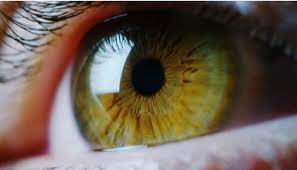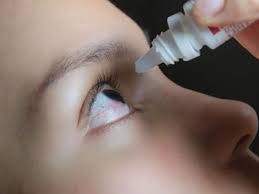Dry eye syndrome, a globally pervasive ocular condition, is of particular significance in India, where a substantial portion of the population grapples with its impact on ocular health. Recent studies estimate that approximately 25% of Indians experience symptoms associated with dry eyes, highlighting the widespread nature of this condition in the country. As we delve into the complexities of ocular health, it becomes imperative to understand the unique challenges posed by dry eyes in the Indian context, and the pivotal role that advanced cornea services play in addressing this prevalent issue.
India’s varied climate, which is marked by fluctuating humidity levels and pollution from the environment, complicates the situation with dry eyes. Dry eye symptoms can be made worse by elements like air pollution, which is common in cities, and high temperatures. For these reasons, it’s important to address this public health issue. Moreover, the growing incidence of digital device usage, which is frequently linked to dry eyes, emphasises the necessity of comprehensive ocular care customised for the Indian population.
Here is an effort to demystify dry eyes by exploring the multifaceted factors contributing to its development and delving into the advanced cornea services designed to preserve and enhance optimal ocular surface health.
MUST READ | COP28: Orderly And Just Phase-Out Of Fossil Fuels, Reduction In Unabated Coal Power — What The GST Draft Text Says
Understanding Dry Eyes
Dry eye syndrome is characterised by an imbalance in the composition or quantity of tears, resulting in insufficient lubrication for the eyes. The tear film comprises three layers – aqueous, lipid, and mucin – and any disruption in this delicate equilibrium can lead to dry eyes. The cornea, as the eye’s transparent outermost layer, is particularly vulnerable to the effects of inadequate lubrication, often manifesting as discomfort, irritation, and potential damage to the corneal surface.
MUST READ | Chandrayaan-3: Propulsion Module Takes Successful Detour, Is Brought From Lunar Orbit To Earth Orbit
Causes Of Dry Eyes

A myriad of factors contributes to the onset and exacerbation of dry eyes. Environmental influences, such as low humidity or exposure to wind and smoke, can play a role. Aging is another significant factor, as tear production tends to diminish with age. Hormonal changes, prevalent in women during pregnancy or menopause, can also impact tear quality. Additionally, systemic conditions like diabetes, rheumatoid arthritis, and medications such as antihistamines or antidepressants are known culprits in inducing or worsening dry eye symptoms.
MUST READ | COP28: Pledge To Triple Renewable Energy By 2030, Climate Finance — Key Announcements So Far
Diagnostic Tools
Advanced diagnostic tools, including tear osmolarity measurements, InflammaDry tests, and corneal staining with vital dyes like fluorescein and lissamine green, enable ophthalmologists to pinpoint the root causes of dry eyes with precision.
MUST READ | COP28: Exceeding 1.5 Deg C Global Warming Inevitable, Food System Reforms Needed — 10 New Climate Science Insights
Customised Treatment Plans
Personalised treatment plans often begin with artificial tears or lubricating eye drops. Lifestyle modifications, including proper hydration, use of humidifiers, and regular breaks during extended screen time, are also integral components of the treatment approach. Prescription medications like cyclosporine and lifitegrast may be prescribed to manage inflammation.
MUST READ | Cyclone Michaung: Know How It Got Its Name And Was Formed
Thermal Pulsation Technology
Thermal pulsation technology is used to address meibomian gland dysfunction, a common contributor to evaporative dry eye. By applying controlled heat and gentle pressure to the eyelids, this technology is used by devices that effectively clears blocked glands, restoring the lipid layer of the tear film.
MUST READ | How HIV Impacts Fertility, Infant Outcomes When A Parent Is HIV-Positive, And Treatment Options
Amniotic Membrane Transplants
Severe cases of dry eyes, leading to corneal damage, may benefit from amniotic membrane transplants. These grafts, derived from human placental tissue, contain growth factors and anti-inflammatory properties that promote corneal healing.
MUST READ | Tortoises, Hares, Carnivorous Mammals — Menu Of Paleolithic Humans More Varied Than Previously Thought, Says Study
Corneal Collagen Cross-Linking
Corneal collagen cross-linking, a well-established procedure for treating keratoconus, has shown promise in managing corneal thinning associated with severe dry eyes. This minimally invasive procedure strengthens the cornea by enhancing collagen bonds.
MUST READ | Using Hair Styling Products With Heat Increases Concentration Of Toxic Chemicals, Study Explains How This Harms Health
Scleral Lenses

Scleral lenses, characterised by their large diameter that extends beyond the cornea to rest on the sclera, offer relief for dry eyes. These lenses create a fluid reservoir between the lens and cornea, ensuring constant hydration and minimising discomfort.
MUST READ | Science For Everyone: How Antimicrobial Resistance Impacts Agriculture, Its Effect On Humans, And What Must Be Done
Conclusion
The field of managing dry eyes has undergone substantial change, and today’s advanced cornea services provide a wide range of diagnostic and treatment options. When exploring the complex world of eye health, it’s important to understand that treating dry eyes involves more than just symptom relief. The cornea requires careful attention and care since it is a guardian of the health of the eyes.
It is recommended that people who have symptoms of dry eyes that do not go away consult cornea specialists. Equipped with the most recent developments in ocular care, these experts are prepared to customise interventions to meet the specific needs of each patient.
MUST READ | Antibiotic Use Linked With Increased Risk Of Heart Attack And Stroke In Women. Here’s Why
(The author is a cataract specialist and ophthalmologist, and Medical Director, Balaji ENT and EYE Hospital).
[Disclaimer: The opinions, beliefs, and views expressed by the various authors and forum participants on this website are personal and do not reflect the opinions, beliefs, and views of ABP News Network Pvt Ltd].
Check out below Health Tools-
Calculate Your Body Mass Index ( BMI )
Calculate The Age Through Age Calculator
